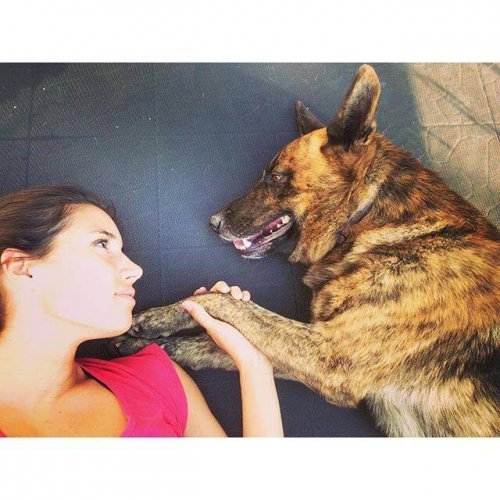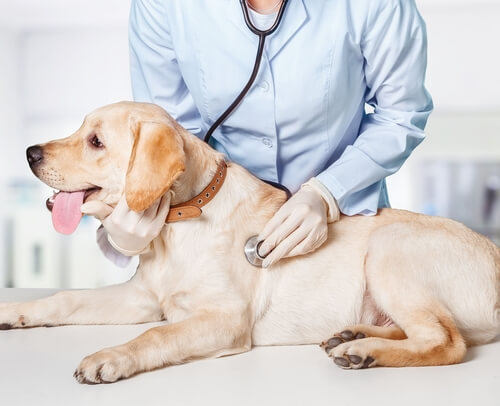Health Alert: What is Anaphylaxis in Dogs?


Written and verified by the lawyer Francisco María García
Anaphylaxis in dogs is an acute generalized immune reaction. And, it appears suddenly. It is as a very severe and accelerated allergic reaction. Basically, substances and mediating cells in the blood are released.
Symptoms of anaphylaxis in dogs
Canine anaphylactic reactions are different from ours and may vary from animal to animal. The changes observed in behavior, for example, can lead some dogs to a lethargic state, while others become hyperactive, irritated, or anxious.
In addition, the signs of anaphylaxis in dogs tend to become more severe if we do not treat them quickly. Many animals arrive at the veterinary clinic already in a coma, which makes it difficult to treat them. In more serious cases, the animal may collapse and die.

- Vomiting and diarrhea
- Itching, or hives usually accompanied by excessive itching
- Loss of control over urination and defecation. The animal urinates and defecates suddenly, without being able to control itself.
- Fluid retention and swelling, mainly if bitten by an insect.
- Hypersalivation or excess saliva production; The animal tends to drool constantly.
- Heavy breathing or shortness of breath.
- Pale gums and mucous membranes.
- Apathy and/or lethargy: usually accompanied by a weak pulse.
- Hyperactivity: almost always with tachycardia.
- Convulsions, cramps and a feeling of cold in the extremities.
- Unconsciousness: comatose.
Causes associated with canine anaphylaxis
Like the symptoms, the associated causes of anaphylaxis in dogs are usually diverse and vary according to the patient. However, the causes that most often lead the animal to an anaphylactic reaction are:
- Allergic reaction to an insect bite, whether wasps, bees, mosquitoes, etc.
- Treatment with certain drugs and vaccines, mainly penicillin administration.
- Exposure to or consumption of chemicals, products or foods of high toxicity such as grapes, chocolate, poisons, etc.
Risk factors of canine anaphylaxis
Treatment for anaphylaxis in dogs
Many times a dog with anaphylaxis should be admitted for immediate and prolonged treatment. They are usually given intravenous fluids, antihistamines, and anti-inflammatory medicine to stabilize them. However, the effectiveness of the treatment will depend on the state in which the animal arrives at the clinic.

Anaphylaxis in dogs: is it possible to prevent it?
The first preventive measure regarding anaphylaxis in dogs is to avoid or control the associated risk factors. If the home is in an area in which there are many insects, perhaps it is best to resort to the use of repellents and insecticides suitable for pets.
Although there are different remedies, industrial and homemade, we don’t recommend applying any product to your pet before consulting a veterinarian.
If our pet has never taken an allergy test, it is important to inform the vet. Especially if we have observed changes in his food routine, his behavior, or his body.
Cardiovascular problems can almost always be prevented or controlled by adopting healthier habits. A balanced diet, physical exercise on a regular basis, vaccination, deworming and adequate preventive medicine are some of those habits.
Animals already diagnosed with cardiovascular disorders may need to take medication for prolonged periods of time, or even for the rest of their lives.
Furthermore, you should organize your home in such a way that we do not leave possibly toxic substances within reach of our pets. We should include cleaning products, cosmetics, poisons, medicines, etc. in this list.
This text is provided for informational purposes only and does not replace consultation with a professional. If in doubt, consult your specialist.